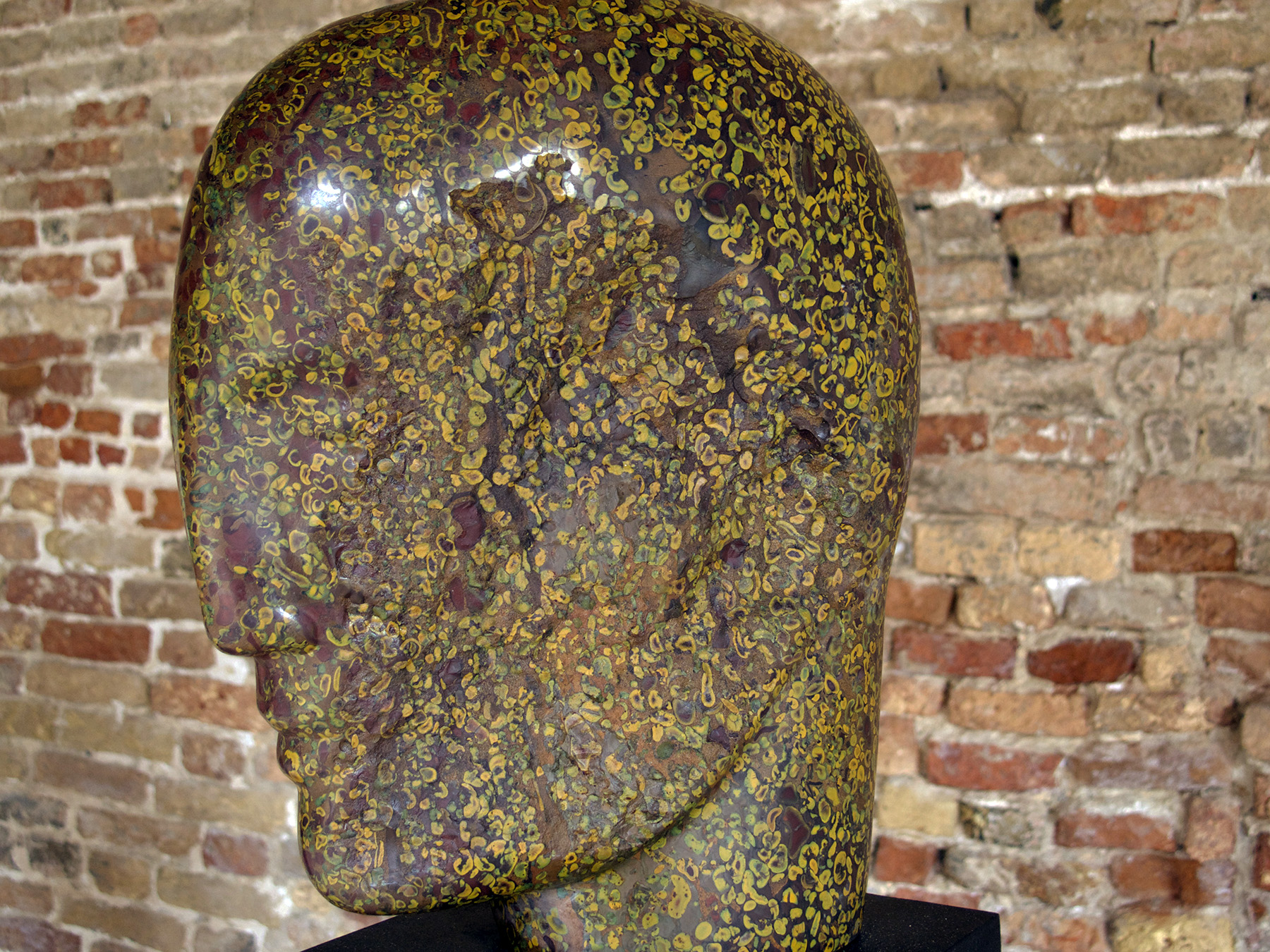When I think back to my time in Venice during the Biennale in 2015, snugly lodged in the attic of some decrepit Palazzo, exploring exhibit after exhibit during the days, I feel nothing but gratitude. Such visual riches, such food for thought. Such freedom to explore at my own pace, such amusement at the gradient from Kitsch to Kunst, as they say in German.



For me the most memorable and admired exhibit was shown at the cloisters of the Madonna dell’Orto church: Emily Young’s Call and Response. Here is a description of the work of who is called Great Britain’s greatest living sculptor:
Using rock from quarries near her studio in the Etruscan hills, Young’s work fuses the age-old principles of stone carving with a progressive, widely informed approach to form and composition. The contemporary and ancient are united in these sculptures, creating a rare and poetic presence that is amplified by the atmosphere of the tranquil Venetian cloister, which is part of the Madonna Dell’Orto church favoured by the Italian painter Tintoretto. Monumental yet strongly individualised, static yet expressive, these sculptures encourage the deep contemplation on mankind’s relationship with stone and its source of origin; the Earth.


In the artist’s own words:
“Every moment of every day and every night humankind is called to by the Earth, and we respond to her, our mother planet, our creator. She is our maker, and we her dependents… These are things I think about when carving these stones which the local volcano has thrown out in some eruption, or the wind and rain has exposed over thousands of years, or a river has rolled and smoothed around, for me to find and work into a semblance of me, a conscious human. Throughout our human history we’ve acknowledged nature’s great powers in this way.
When I carve the stones I wait to see what the stone and I arrive at together. I think: these stones can easily carry my call back to the Earth, of sorrow and the knowledge of tragedies unfolding, along with gratitude and delight in the beauty of unpolluted night skies. I add my voice to the stone’s, one made in Earth’s history, in violence and stillness and endurance, born of their ascent out of and descent back to dusty origins. They can last at least as long again as they already have done, millions upon millions of years.”
The work is ravishingly beautiful. As is the sentiment.


It also inspired playfulness in me upon my return to the States, a tongue-in-cheek exercise trying to add something to this arc from antiquity to the present. Taking snippets of paintings ranging from 17th century to 19th century works that I had photographed during my various travels, I provided some relief for eyes sore from all the incoming brilliance. The title of the project was Augentrost (the German name for the plant Euphrasia which was used in the middle ages to treat eye ailments.)











It feels like an eternity ago. Which, wouldn’t you know it, is another subject taken up by Emily Young and many an artist preceding her. If I could travel now this would be my sprint to take in before it closes this month:
and here is Eternity’s Sunrise ….






Steve T.
Brought tears to my old eyes. That there are people on this earth (Emily, you) who give us the exact opposite of people like McConnell gives me hope. Thank you.
Cindy Lommasson (@CLommasson)
Brilliant! Thank you for this post, Friderike.